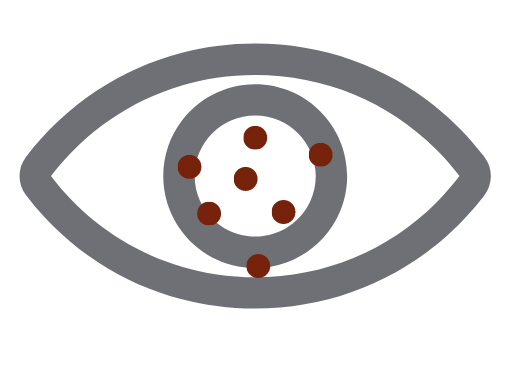07.01.2022
ET 101
Introduction to eye tracking
 by Mirta Mikac, Product Manager
by Mirta Mikac, Product Manager
Eye tracking in a nutshell
As the name suggests, eye tracking is the physiological system of measuring eye movements to allow a deeper understanding of the human visual behavior. This means that an eye tracker records the order and location of where the eye is looking at to detect the areas which are brought to people’s attention. While there are different types of eye trackers available on the market, the most commonly used are infrared video. First, these devices take images of the human eyes based on infrared illumination principle and then send them to a computer where with the help of software analysis an in-depth information of the visual behavior is obtained.
1.
An invisible near infrared or infrared light is emitted by the eye tracker to illuminate the face of the participant in front of the eye tracker, especially the eye and the pupil.
2.
An infrared camera takes images of the participant.
3.
Algorithms are performed which detect the participant, the eyes, the pupils and the bright reflections of the infrared light on the cornea of the eye in the taken images. From this information, the location of the eye and the gaze direction is computed.
4.
The obtained information is further processed and calculated in order to know where the participant is looking at.

The idea behind eye tracking technology
Eye tracking technology relies on the eye/mind hypothesis developed by Just and Carpenter back in 1976 and is based on two major components:
1.
The location of fixation is an indicator of an area of interest.
2.
The duration of fixation and the pattern of eye movements depend on the easiness or difficulty of the stimuli to be processed.
Our eyes move on average three times per second¹ and they are powerful indicators of our preferences, decision-making, and behavior. They move towards stimuli that interests us and our pupils dilate when we are having an intense emotional response. While there are several types of eye movements, the two most important ones, which are also extensively analyzed with eye tracking technology, are fixations and saccades.
Fixations occur when our eyes are more or less still and have a focus on a particular stimulus lasting approximately for 250 ms². In that period, the retina is stabilized over a stationary object of interest. On the other hand, saccades are rapid eye movements that take place between two fixations. This can also be described as the movement of the eye-gaze from one point to another. Saccades typically take less than 100ms³, therefore no new information can be obtained during this eye movement.

Within the eye tracking field, the accuracy refers to the difference between the measured gaze position and the exact position of where the person is looking at. The precision indicates how reliable the gaze point measurement is reproduced.

Poor accuracy, good precision

Good accuracy, good precision

Poor accuracy, poor precision

Good accuracy, poor precision
To conduct reliable and good quality eye tracking data, a calibration procedure is an important first step to avoid accuracy errors. Such errors occur due to the individual variability of human eyes. The so-called foveal location (or focus point) is responsible for sharp central vision and differs across people. The whole process of calibration is simple and straightforward. It is done for each participant separately. During the calibration process the participant is asked to follow a calibration point that moves across the screen to obtain his or her actual gaze point.
Fields of application
Eye tracking has become a very reliable and well-known method to analyze where people are looking at. Especially in academic research fields such as psycholinguistics or cognitive psychology it is being used for decades. In the past years eye tracking has also experienced an increased use within market research, advertising and branding, usability, as well as virtual/augmented reality to get better insights into human behavior.
1
Rucci, M., & Poletti, M. (2015). Control and Functions of Fixational Eye Movements. Annu Rev Vis Sci, 1, 499-518.
2
Galley, N., Betz, D., & Biniossek, C. (2015). Fixation durations – Why are they so highly variable? In T. Heinen (Hrsg.), Advances in visual perception research (pp.83-106). New York, NY: Nova Science.
3
Leigh, R.J., & Zee, D.S. (2015). The neurology of eye movements. 5th ed. New York: Oxford University Press.
